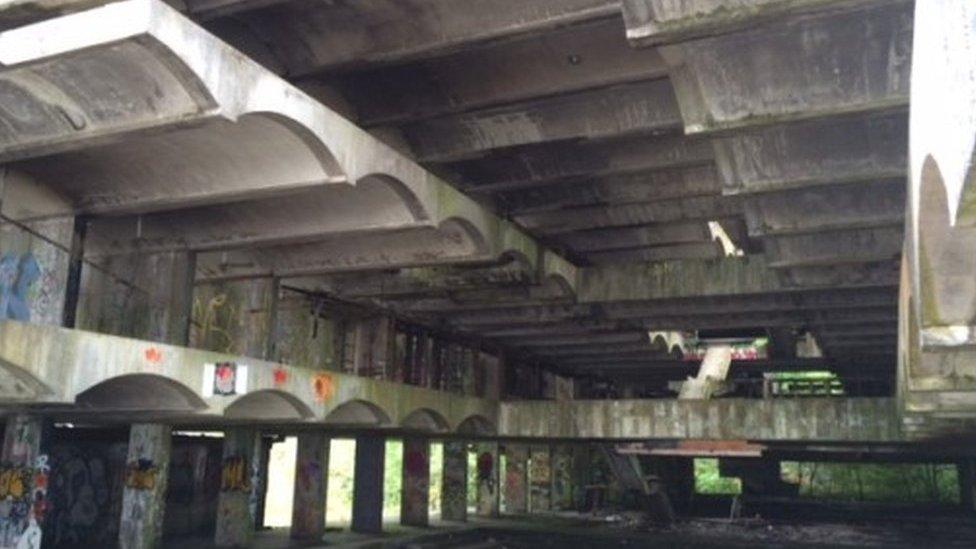Marquess of Bute tries to revive plan to save St Peter's Seminary
- Published
Artist Angus Farquhar gives a tour of St Peter's Seminary
A Scottish laird has called for public funding to help conserve an A-listed building, which was once described as a "modernist masterpiece".
St Peter's Seminary, near Cardross in Argyll and Bute, closed more than 40 years ago and is now a partial ruin.
It is owned by the Catholic Church which said it was an "albatross around our neck" which it could not give away.
The Marquess of Bute said he would commit funds from his charitable trust if the government would also help.
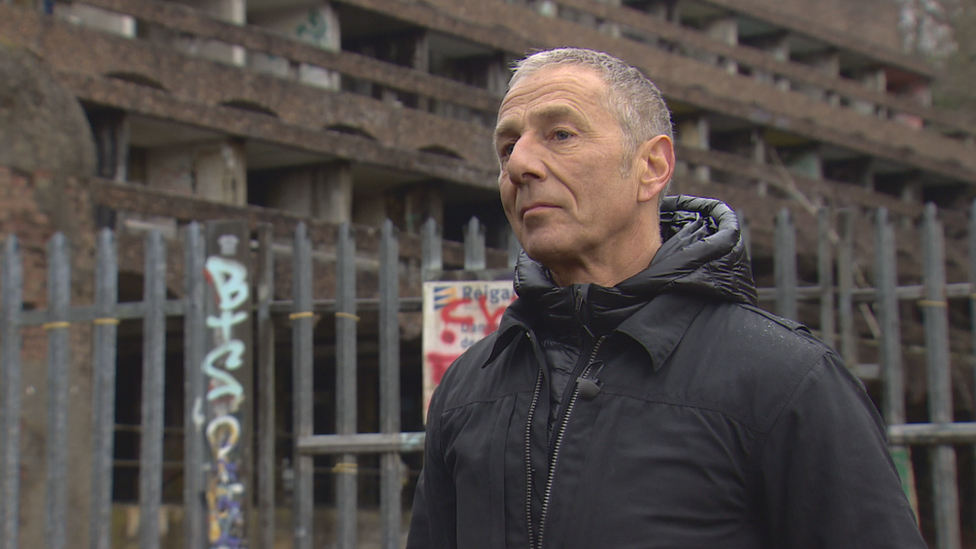
John Bute said he would help to fund the conservation of St Peter's Seminary
The marquess, John Bute, is a former racing car driver who is descended from one of Scotland's oldest aristocratic families and landowners.
His family home is Mount Stuart on the Isle of Bute and he chairs the Mount Stuart foundation, which helped to fund a previous attempt to save the building.
The marquess said the A-listed seminary was a "superb example" of modernist architecture.
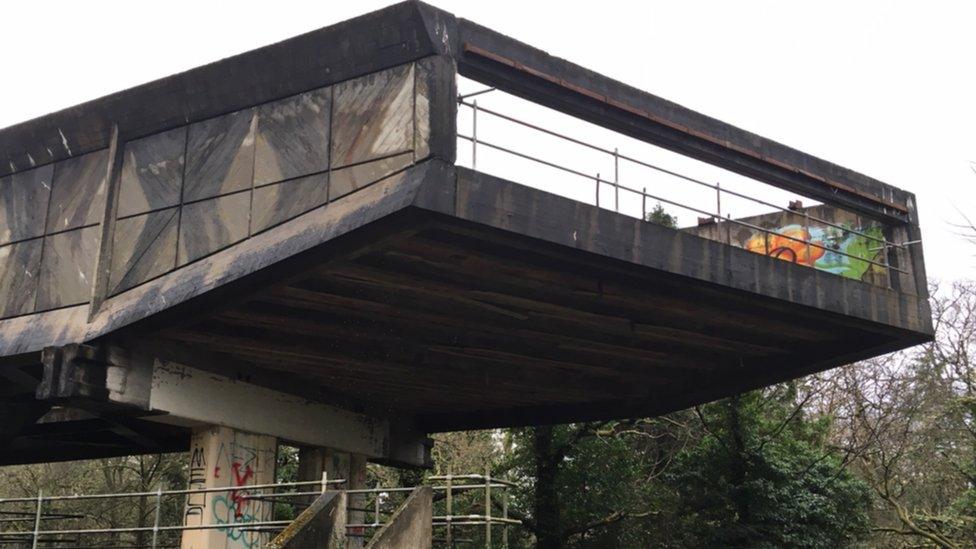
St Peter's Seminary was built by modernist architects Andy MacMillan and Isi Metzstein
He said: "People know this building all over the world. It is widely recognised as being one of Britain's finest examples of Brutalist architecture."
He said his trust had already helped to fund efforts to save the seminary and would offer continued support to the right regeneration project if other money could be found elsewhere.
The Scottish government said a report by Historic Environment Scotland into the future of the building was under consideration.
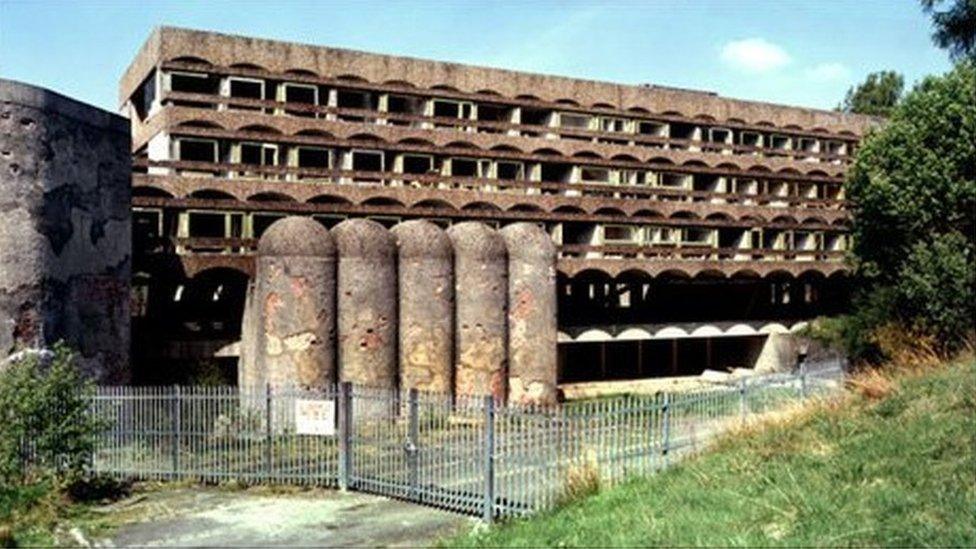
The building opened in 1966 and was deconsecrated in 1980
The seminary was built in 1966 as a training college for Roman Catholic priests but closed in the 1970s and lay empty until a plan emerged to turn it into a cultural centre.
However, that plan was shelved and the building is now set to remain a ruin, with the Catholic Church saying it does not know what to do with it.
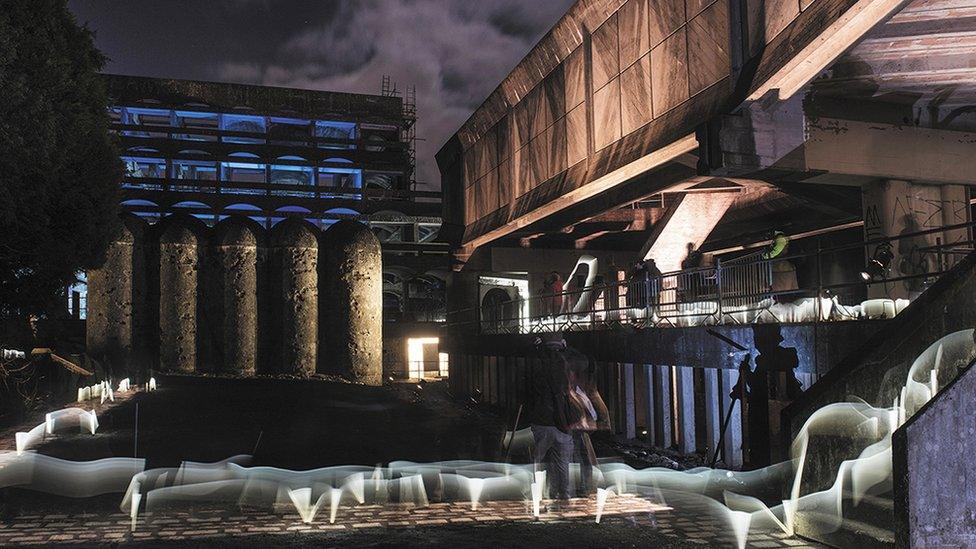
The seminary was used as a backdrop for a sound and light show called Hinterland by NVA in March 2016


The seminary, which is surrounded by acres of woodland, was designed by Scottish architectural firm Gillespie, Kidd and Coia for the Archdiocese of Glasgow.
Renowned architects Andy MacMillan and Isi Metzstein supplied the vision for the distinctive zig-zag design and concrete appearance, with internal features such as vaulted ceilings and floating staircases.
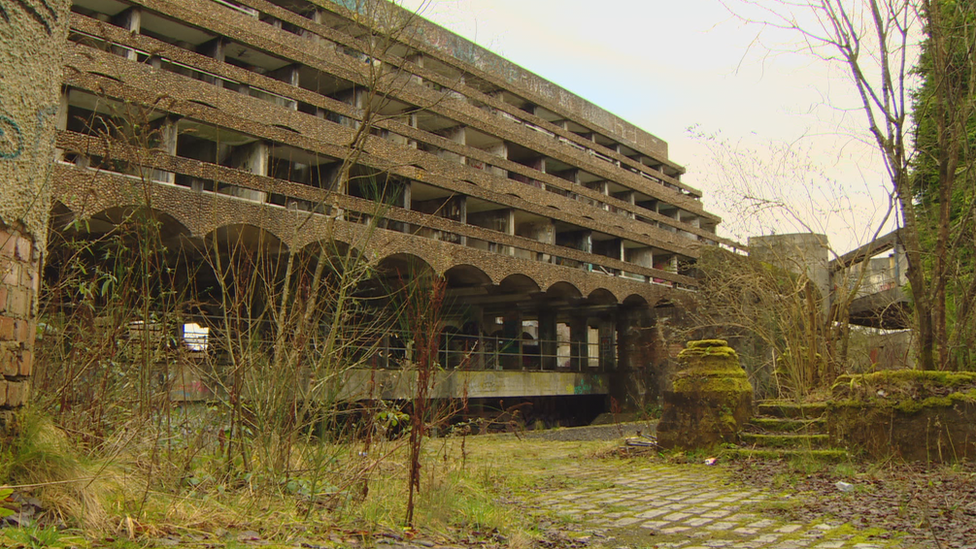
St Peter's Seminary was built in 1966 as a training college for priests
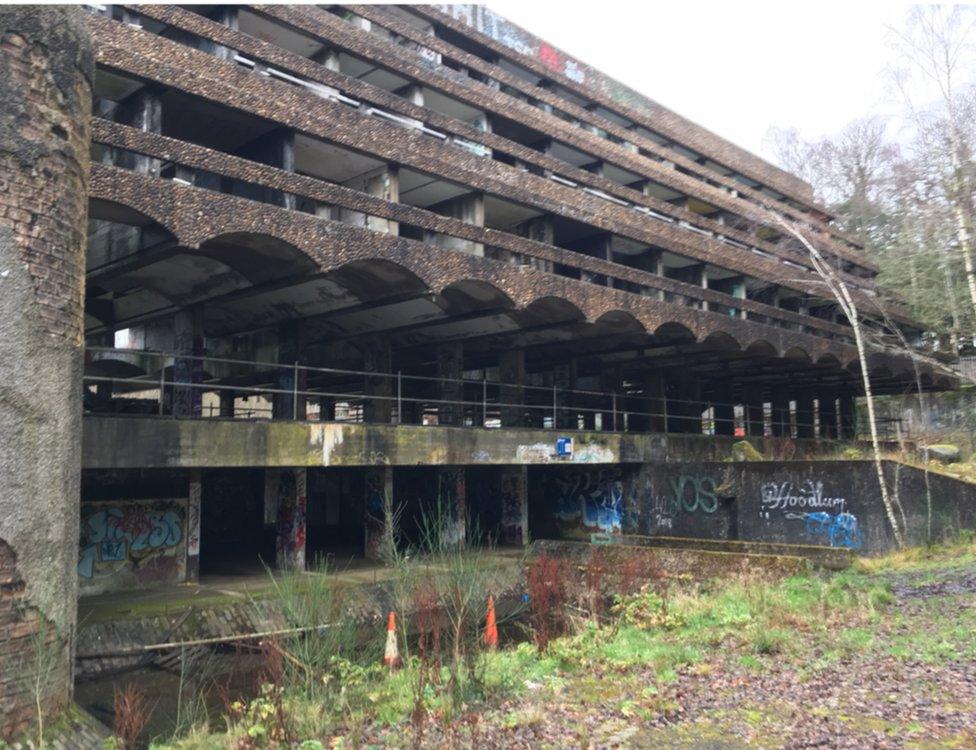
The seminary is considered a modernist masterpiece
The structure came to be considered a modernist masterpiece but its working lifetime was short and when the number of trainee priests fell, the seminary was deconsecrated in 1980.
Since then, the building has became degraded by fire, rain and vandalism, but it still regularly attracts visits from architecture students and aficionados from around the world.
Its importance was recognised in 1992 when the seminary was Category A listed by Historic Scotland.
Architecture expert Prof Alan Dunlop told BBC Scotland the building was as important as Charles Rennie Mackintosh's Glasgow School of Art.
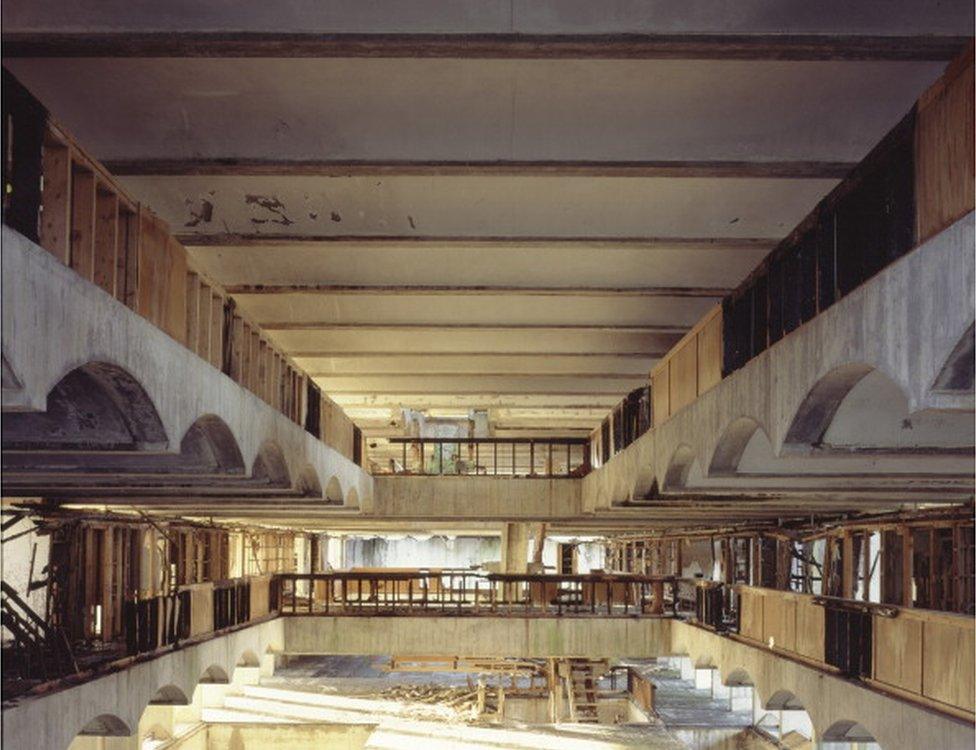
The inside of the seminary pictured in 2004 before work was carried out to make the area safe

Work has been carried to clear debris and make the building safe but the organisation behind the move went bust
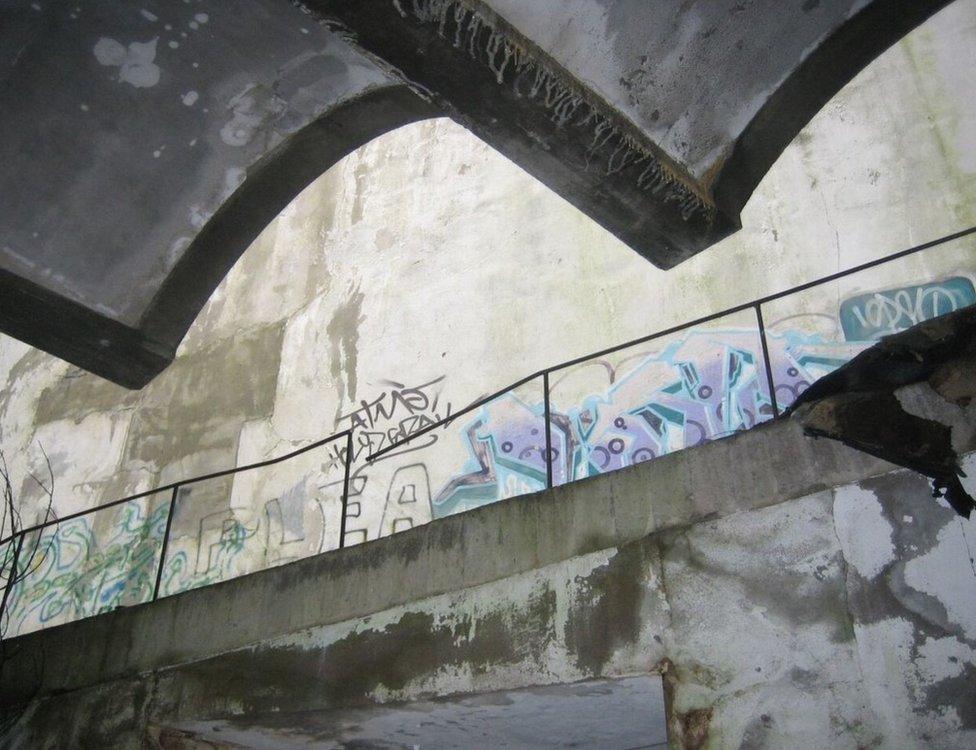
The secluded seminary has been a target for vandalism and graffiti
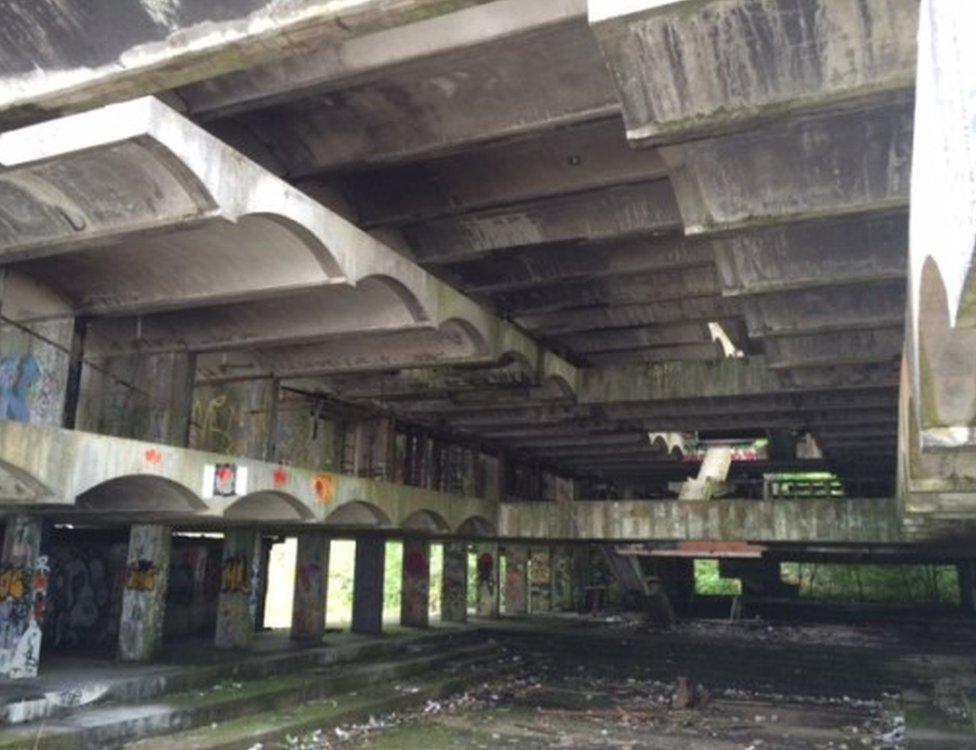
Some have likened the building to a disused car park but others consider it a classic
The Archdiocese of Glasgow has been trying to find someone to take the building on for decades but now fears it will have to remain a ruin.
Until June last year there was hope for the building, with arts organisation NVA working on turning it into an arts venue and cultural centre.
It spent about £3m trying to make the building safe and removing hazardous materials such as asbestos.
The Marquess of Bute was a major contributor to that effort.
However, NVA closed down last year, saying the challenges facing the company were "compounded" when a core funding bid to Creative Scotland was unsuccessful.
- Published12 January 2019
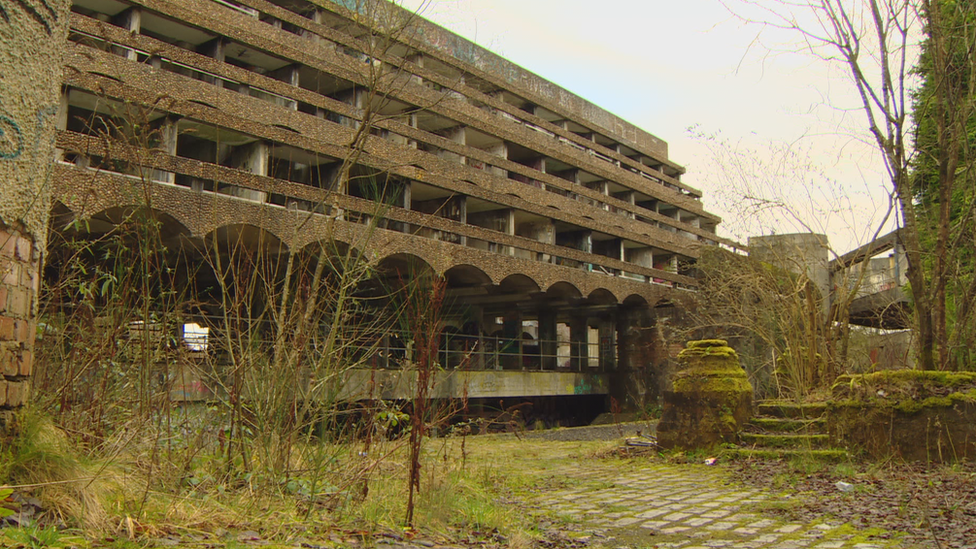
- Published5 June 2018
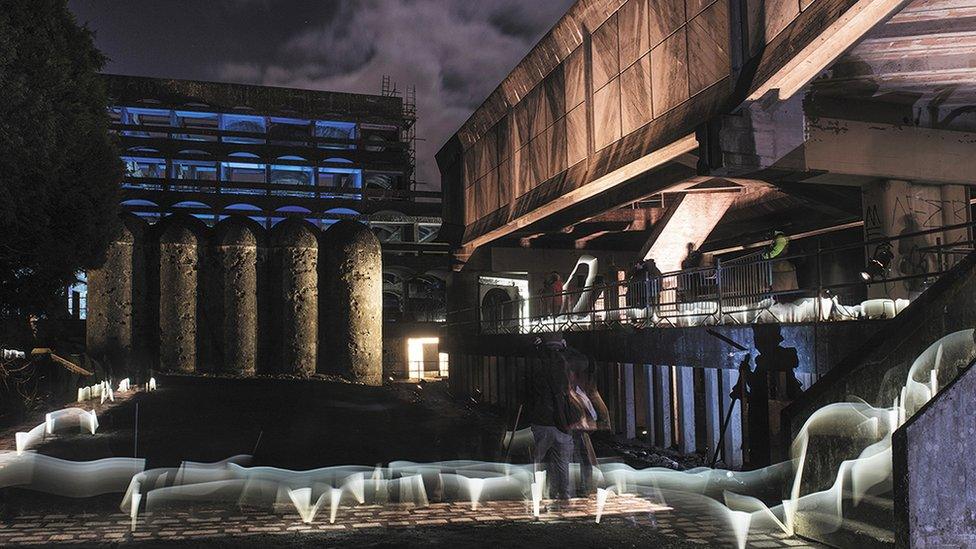
- Published12 February 2017
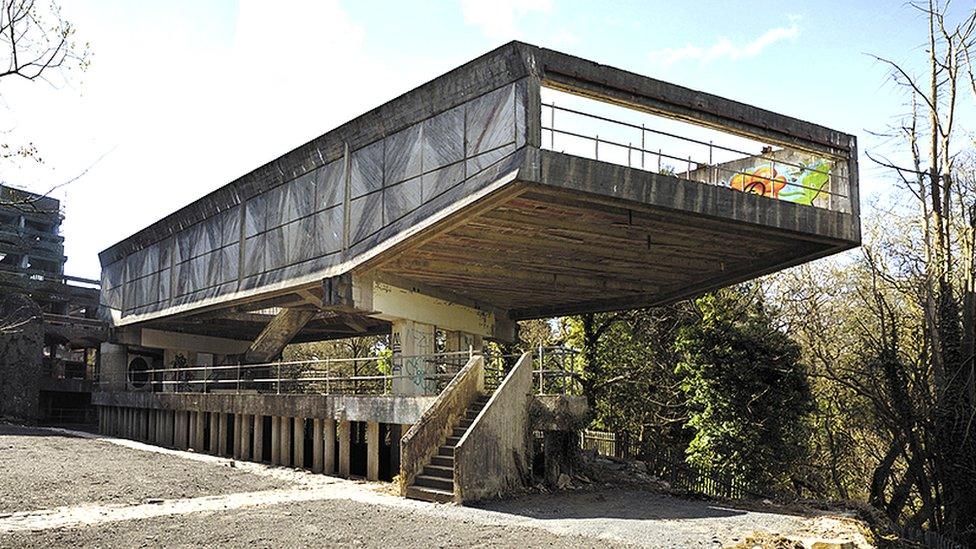
- Published18 March 2016
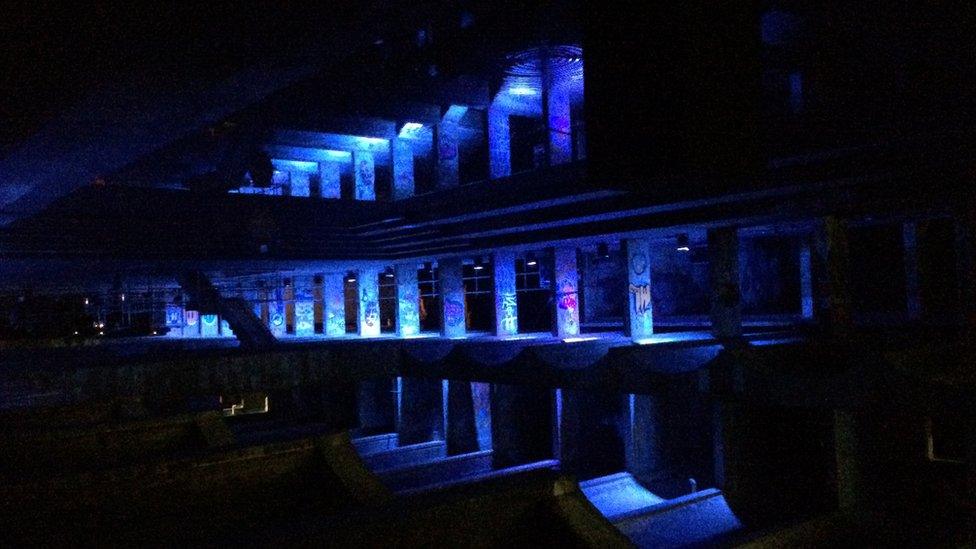
- Published19 March 2016
